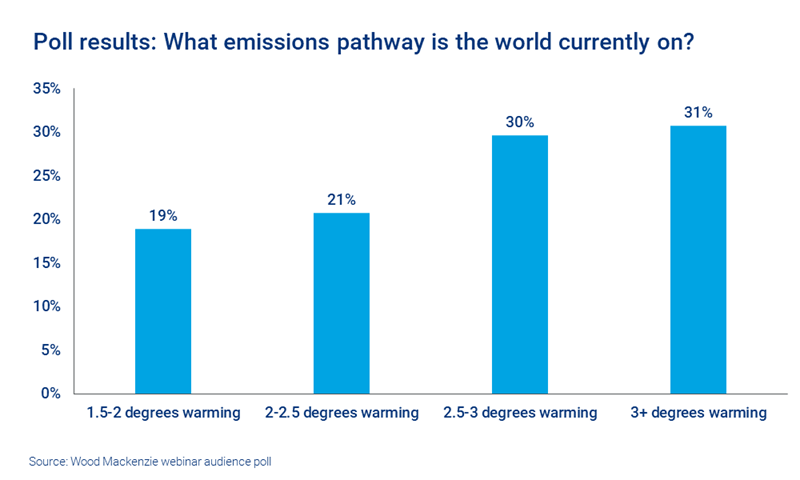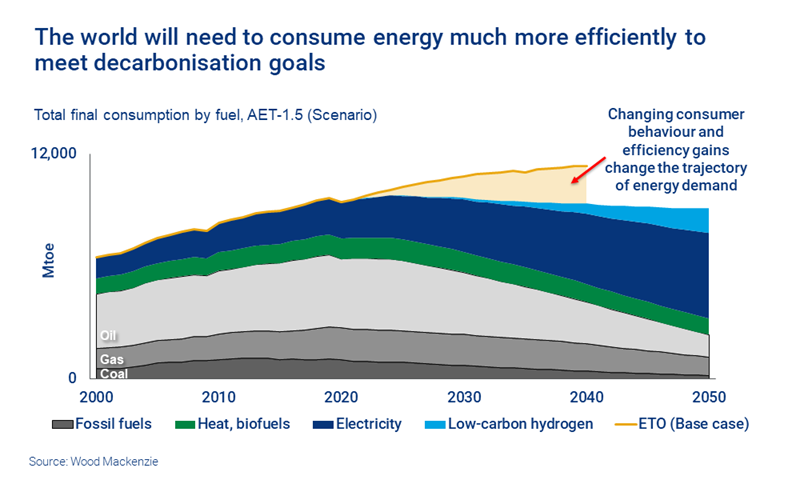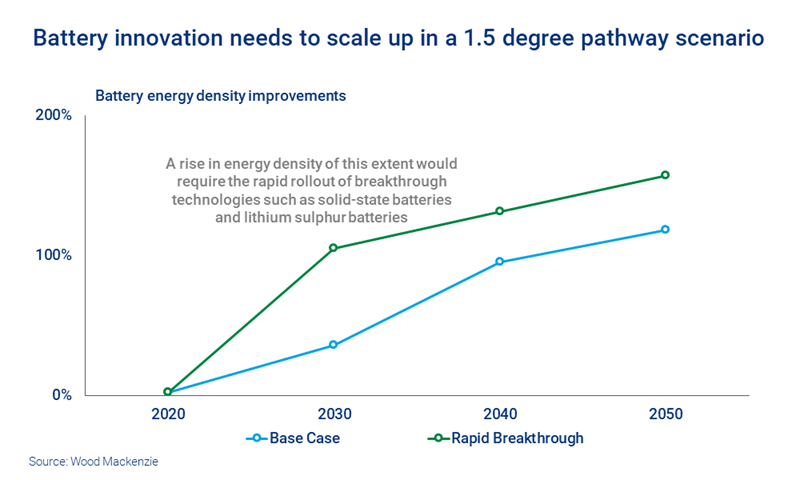1 minute read
Jonathan Sultoon
Head of Markets & Transitions, Energy Transition Practice

Jonathan Sultoon
Head of Markets & Transitions, Energy Transition Practice
Jonathan has over 20 years’ experience leading analysis for global energy markets
Latest articles by Jonathan
-
Opinion
Which technologies will drive the energy transition?
-
Featured
What would it take to limit global warming to 1.5 degrees?
Global temperatures are already 1.2 °C above pre-industrial levels. Limiting global warming to 1.5 °C – in line with the most ambitious goals of the Paris Agreement – will soon be unachievable without swift and sustained action. Emission-reduction efforts would need to be far faster and much greater than laid out in our 2 °C Accelerated Energy Transition scenario (AET-2).
But is it really feasible to forge a 1.5 °C pathway and reach global net zero in emissions by 2050? And how far-reaching would the necessary climate actions be? To find out, we’ve developed our inaugural 1.5 °C Accelerated Energy Transition (AET-1.5) scenario, which we recently presented in our Pathway to global net zero 2050 webinar.
Missed the webinar? Fill in the form for a complimentary replay, and an extract from the presentation. Or read on for a few insights into how a 1.5 °C scenario might look – and why it’s both a massive task and a US$50 trillion opportunity.
No one said it would be easy
During our AET-1.5 webinar, we polled an audience of oil, gas and renewables professionals to take the collective pulse on the energy transition. More than 60% said they believed the world to be on a global-warming trajectory of at least 2.5 °C, while just over half doubted that the Covid-19 pandemic would lead to a permanent change in the way we produce and consume energy.
To be sure, containing the rise in global temperatures to 1.5 °C over the next three decades will be extremely challenging. By our calculations, however, it is achievable – if the necessary action starts today and the world collaborates like never before. This is especially true of the largest emitters. China, Japan, South Korea, the EU and US are responsible for more than two-thirds of global gross domestic product and two-thirds of carbon emissions.
Europe has already announced a fast and furious plan to cut emissions to 55% below 1990 levels by 2030 – a huge and highly ambitious leap from its previous target of 40% – but one that is necessary if the bloc is to be a net-zero emitter by 2050.
To achieve a 1.5 °C target, the rest of the world must follow suit.
Embedding the behavioural changes of the Covid-19 pandemic
In both our AET-2 and AET-1.5 scenarios, CO2 emissions increase only marginally after the end of the Covid-19 pandemic, before starting to fall rapidly.
Under our AET-1.5 scenario, many of the changes in travel patterns seen in 2020, such as reduced international air travel and increased home working, will need to become permanent. There will have to be an exponential rise in annual emission reductions of up to 1.8 billion tonnes of CO2 (BtCO2). That’s roughly on a par with the decline seen between 2019 and 2020 as the Covid-19 pandemic curtailed economic activity around the world. That’s an enormous challenge, but one that must be met to meet the goals of Paris’ most strict interpretation.
To meet the 1.5 °C goal, emissions must fall rapidly across all sectors, not just the energy sector. The world must consume energy much more efficiently to meet decarbonisation goals, and the negative impact of land-use changes will need to be addressed.
Early peak energy, low-carbon hydrogen and carbon removal technologies play a major role in our scenario, while consumer behaviour will have to undergo radical change. The carbon budget is just 30% of what’s available in a 2 °C world, so the focus will have to shift to all areas of the economy, including those that preserve biodiversity and restore nature.
Embracing a brave new 1.5°C world
A 1.5 °C world is more integrated and inter-connected. It’s highly efficient and productive. Carbon and methane become key differentiators in industry cost structures. Zero-emission industries emerge in coastal locations and companies are structured around monetising carbon emissions. A circular economy is established where resources are fully utilised.
Industrial processes are made as efficient as possible; advanced recycling technologies see ‘peak plastics’ being reached in the 2030s. Increased scrap use also reduces metals demand. Digitalised transmission and distribution networks and long-duration storage systems drastically reduce renewable curtailment. Automation, digitalisation and robotics allow tech companies to enter energy and auto markets.
Under AET-1.5, battery innovation needs to be scaled up considerably. A rise in energy density of the extent needed would require the rapid rollout of breakthrough technologies, such as solid-state batteries and lithium sulphur batteries. Long-duration storage can facilitate far higher levels of renewable energy penetration.
Electric vehicles (EVs) will account for 95% of all new passenger vehicles sold by 2050 in our 1.5 °C scenario. EV penetration picks up in emerging markets such as South Africa, the Middle East and North African and Southeast Asia, from 2025.
A step change in carbon pricing will be necessary too. Carbon price support of up to US$160/tCO2 will jump-start the net-zero economy, while industrial clusters will help to create value in a 1.5 °C world.
1.5 degrees is a ~US$50 trillion investment opportunity
Electricity demand also expands rapidly under our AET-1.5 scenario, so there needs to be massive investment in low-carbon solutions. The minimum level of capex required is US$50 trillion. Some of that will be for new power capacity, energy storage, electrolysers and carbon capture, utilisation and storage (CCUS) deployments, with the remainder going to cover associated infrastructure, battery metals and hydrocarbons.
In reality, however, total capex – and the scale of the investment opportunity – could be considerably higher.
For more detailed analysis of the challenge ahead, and the investment opportunity, fill in the form for complimentary access to:
- Executive summary and key highlights from our AET-1.5 report, with a foreword from our CEO, Neal Anderson
- Webinar replay: An accelerated energy transition, scenario analysis for a 1.5 degree pathway










